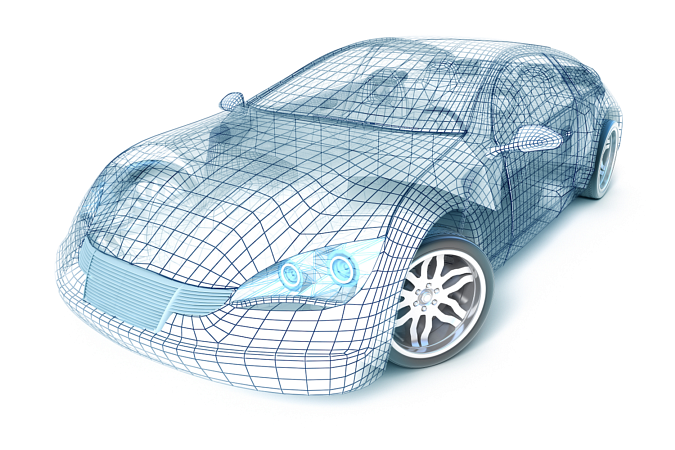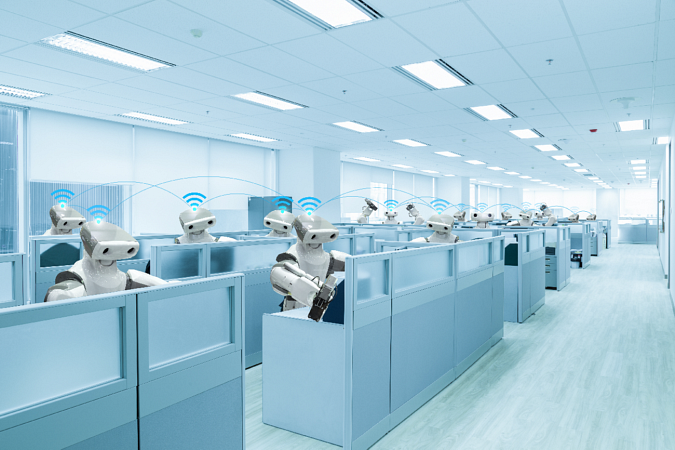
3D printers can turn a three-dimensional digital model into a tangible object without much hassle. The impact of this innovation will reshape global supply chains.
Disruptive technologies have one thing in common: they develop in the background for a long time before suddenly appearing, taking us by surprise. 3D printer technology is just on the verge of becoming a megatrend. What is so special about the 3D printer? First of all, it is essential to realize that the word “printer” is probably not the best name for the new technology. “Printing” means modifying a sheet of paper by adding ink to its surface so that the sheet of paper becomes a sheet of paper with writing on it. 3D printers, on the other hand, don’t need paper or any object in the first place. They magically create objects, seemingly out of thin air. Of course, the objects are created by special “ink” printed in layers until the outlined object appears. What sounds like science fiction seems to work so well that – to the horror of authorities – it is even possible to create a working gun using a 3D printer. On the less violent side, it is also possible to create a myriad of other objects, for example, household items like mugs, lamps, jars, dinner plates, doorknobs, various souvenir items (like the Eiffel Tower or the Cologne Cathedral), etc. It is also possible to create toys using a 3D printer. Regarding toys, the arrival of affordable 3D printers may be incredibly disruptive. Nearly all toys are outsourced to China, cheaply produced, and exported to the rest of the world. The approximate profit margin is astounding, usually a manifold of the production and handling costs. The supply chain looks similar to this: US-based toy manufacturer -> China-based manufacturer -> toy shop -> consumer. What happens when every kid is able to get a blueprint of their favorite merchandised toy and have it 3D-printed out at home? The Chinese manufacturer would be eliminated from the supply chain. Also, the toy shop is likely to disappear. The supply chain would be dramatically reduced: US-based toy manufacturer -> consumer. In this case, manufacturers are no longer manufacturers; they simply provide the blueprints for their toys. That would mean not only a lower cost-to-market, less inventory, and lower overall operating risks; it would also mean a more environmentally friendly approach that could eliminate the risk of child labor and other side effects of using a globally outsourced supply chain. Toy manufacturers would stop being producers of tangible goods and become direct providers of intellectual property directly delivered to the end consumer. Imagine a similar change affecting other items we currently buy from online and brick-and-mortar retailers. You could 3D-print a new table lamp with your favorite cartoon character on it – or perhaps even the cartoon characters themselves in various sizes; why not? – a new clock, a new dinner service entirely designed to match the color and shape of your kitchen and living room furniture. And why stop there? Why not have your shoes, your clothes, your wristwatch, your acoustic and electric guitar, your smartphone, and your spectacle frames created in a Star Trek-like device in your basement? I don’t see any fundamental reason why it wouldn’t be possible one day when 3D printers become more sophisticated. And who knows, maybe even cars and entire homes could be built using sophisticated 3D printers. What if 3D printers can print out even more 3D printers, too? Maybe 3D printing technology will give birth to things we haven’t even imagined yet. However, in the real world, disruptions also have their price. Aside from Chinese (and other countries) contract manufacturers, the brand owners themselves may face the question of securing their intellectual property. 3D printers can potentially disrupt in the same way MP3 technology did. The Napster disaster demonstrated what can happen if intellectual property is transferred to the consumer without being bound to tangible items that cannot be so easily duplicated. If most of the things we use can be created by using a pirated blueprint downloaded from a shady network, the power of brands could diminish, and the market might change completely. Subscription, advertisement-supported, and donation-based models may become a reality. It is also likely that copyright enforcement will become much more intense and suppressive, extending further the “three strikes” rules and IP tracking efforts that have already been introduced. It is even possible that that might lead to significantly limited neutrality and freedom on the net. Just imagine what measures may be demanded and accepted as justified by necessity if the authorities use the “3D printed gun” example to enforce more strict internet control. Despite these open questions I am convinced that 3D printers will continue conquering the world at an increasing rate. We’re only in the early stages of this new technology, and it will demonstrate astonishing abilities in the coming years. It will be powerful, and it will be cheap. Also, similar to MP3 technology, new marketing, sales, and distribution models will be invented and established to keep pace with the expanding capabilities of 3D printing technology. The “3D designer” will become one of the best-paid jobs. An entire industry will revolve around the 3D printing revolution. Having products delivered directly from a home-based device appears so compelling that consumers will demand it to a similar degree as they did with the digital music format: either the producers deliver a suitable, convenient, and legal way of delivery or the products will be widely pirated. I hope the business world has learned from the MP3 example and won’t repeat the same mistakes. I don’t think the 3D printing revolution can be stopped. You can’t fight them – so I recommend you join them.Let’s start a conversation on LinkedIn or X.com (formerly Twitter).
I am a project manager (Project Manager Professional, PMP), a Project Coach, a management consultant, and a book author. I have worked in the software industry since 1992 and as a manager consultant since 1998. Please visit my United Mentors home page for more details. Contact me on LinkedIn for direct feedback on my articles.






Be the first to comment